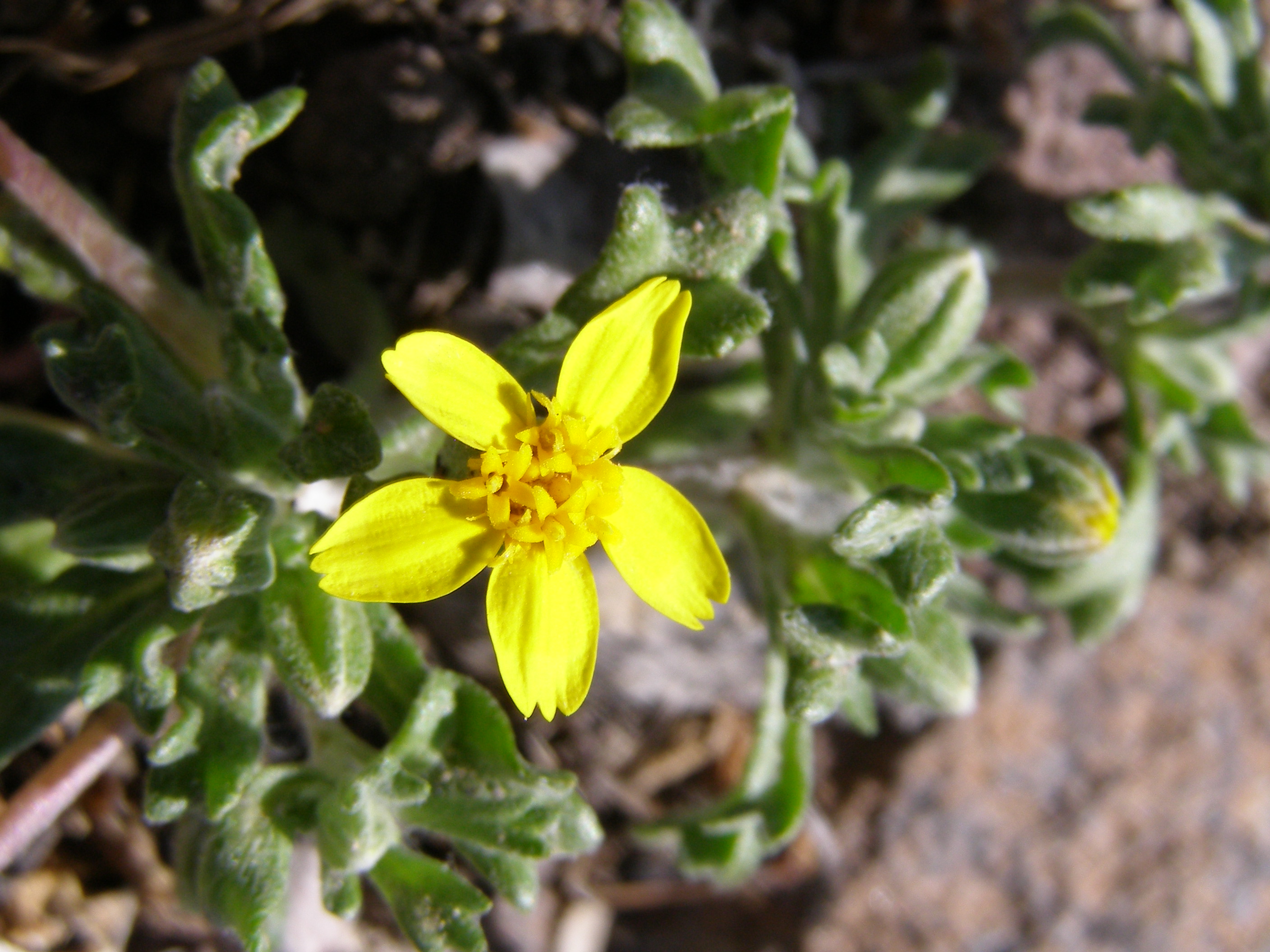Syntrichopappus
|
Family: Asteraceae |
Annuals, 1-10 cm. Stems decumbent or erect, branched from bases or throughout. Leaves mostly cauline; mostly alternate (proximal opposite); petiolate or sessile; blades either linear and margins entire, or narrowly cuneate to spatulate and margins usually distally 3-lobed, faces sparsely tomentose to moderately woolly or glabrescent. Heads radiate, borne singly or in loose, corymbiform arrays. Involucres subcylindric, 2-5+ mm diam. Phyllaries persistent, 5-8 in 1 series (spreading, not reflexed in fruit, distinct, oblanceolate, subequal, alternate ones scarious-margined, apices acute). Receptacles convex, ± knobby or smooth, epaleate. Ray florets 5-8, pistillate, fertile; corollas either yellow, or white or pinkish with reddish veins. Disc florets 10-20+, bisexual, fertile; corollas yellow, tubes shorter than narrowly funnelform throats, lobes 5, ovate-deltate (glabrous; anther appendages narrowly deltate, not glandular; style appendages narrowly triangular). Cypselae narrowly obconic, clavate, or fusiform, glabrous or sparsely to densely hispidulous; pappi 0, or ± fragile (falling in whole or fragmented rings), of 20-40 basally connate or coherent, ± barbellate bristles or subulate scales. x = 7. B. G. Baldwin and B. L. Wessa (2000) found that Syntrichopappus lemmonii nests within a clade of Eriophyllum and Pseudobahia species; circumscriptions of these genera are likely to change.
|

